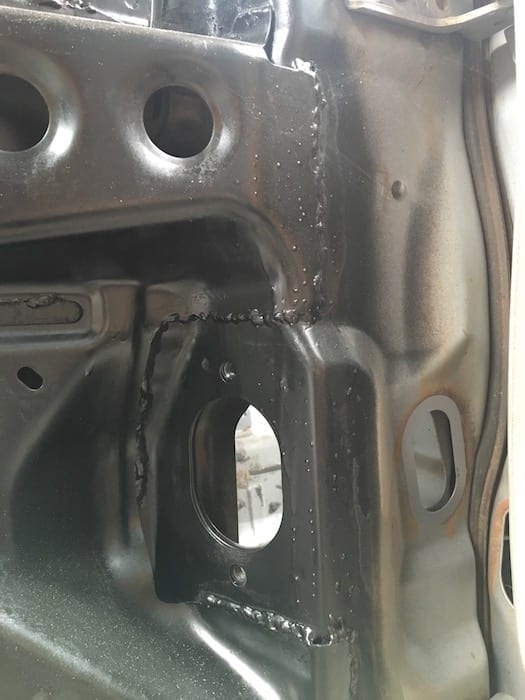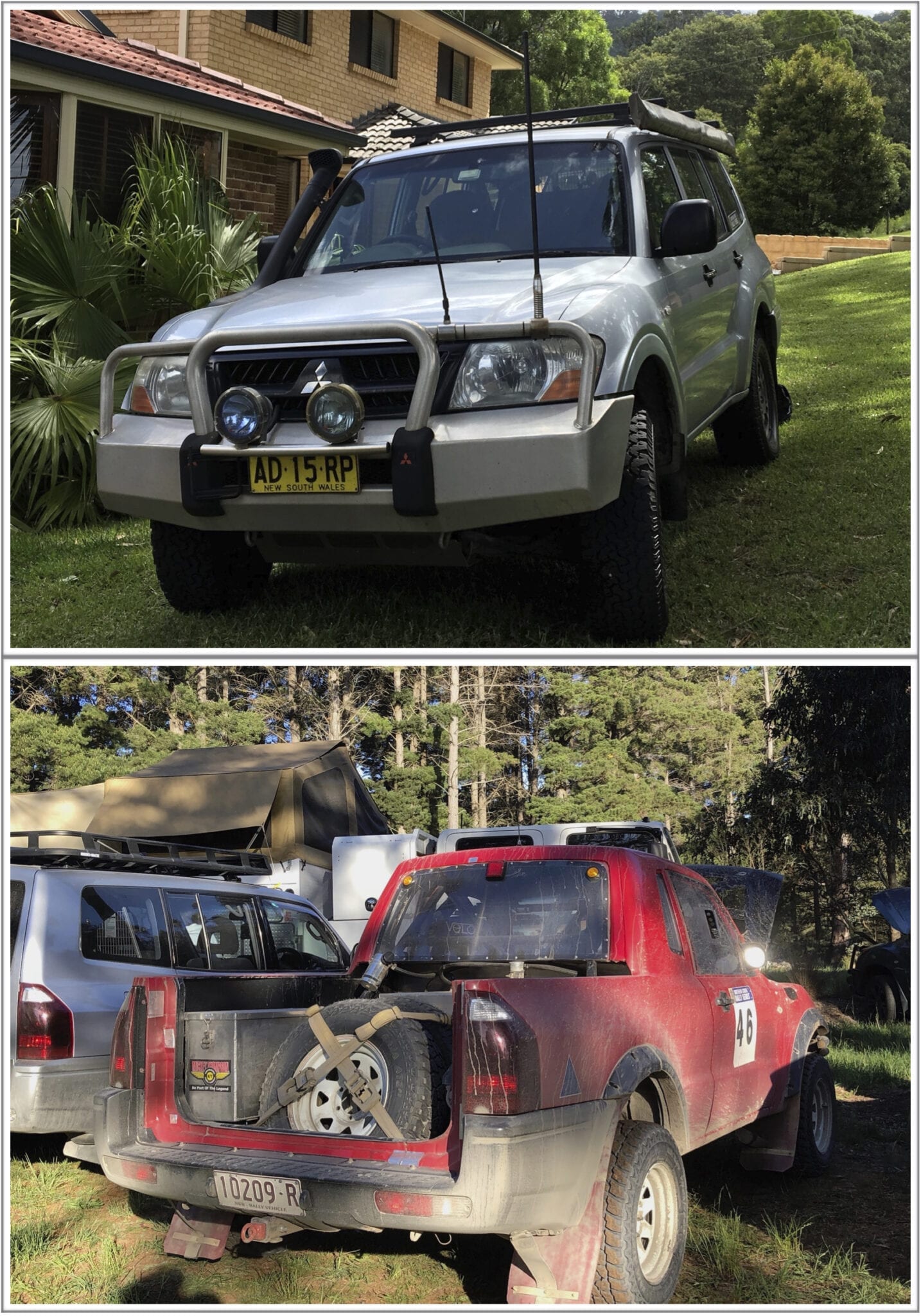Strengthening The Inner Guard Panels
Last time we showed you how the Pajero suspension was upgraded – on a budget. Go here if you missed it.
Learning From Experience
The Gen 1 Pajero was prone to cracking inner guard panels after being thrashed in off road races. Being a basic sheet metal folding, the inner guards were not very strong. They would crack at the firewall below the A pillar, all the way down. The fix was to fabricate an RHS frame and weld it in – this gave the area some strength.

Remember, I’m talking about extreme conditions here – it’s unlikely an on-road Gen 1 would ever experience cracked inner guards at the firewall.
Interestingly, the Gen 3 Pajero has a pressing as a part of the inner guard – very similar to what Dave and others had fitted to the Gen 1’s. This acts as a stiffener and strengthens the inner guard.

An Insurance Policy
The Gen 3 inner guard is spot welded. So Dave decided to fully weld the seams as a further safeguard against cracking. This is commonly done in off road racing. Most “serious” Production Class Gen 3’s have their seams fully welded throughout the vehicle.



It’s interesting when you strip the Pajero down to bare bones. The monocoque design is often derided by non-Pajero owners as being not suitable for a 4WD. However, it’s clear that clever Engineering makes these vehicles super-strong. By using lightweight sheetmetal pressings – often pressings within pressings – Mitsubishi have built great strength into the body. Although it doesn’t have a separate chassis as such, the Gen 3 does have strong chassis rails integrated into the body and reinforced at the weakest points.
Yes, off road ability is compromised by the limited travel of independent suspension. But as all Gen 3 Pajero owners know – myself included – these vehicles are extremely capable. They’ll take you just about anywhere you’re brave enough to point them.
So whilst a monocoque/independent suspension combination will not be able to match a body-on-chassis/live axle vehicle in extreme conditions (rock-hopping and the like), they’ll more than match other vehicles in most conditions. The bonus is impeccable on-road manners for a big vehicle.
In theory, a monocoque should be an ideal platform for an off-road racer. After all, the serious teams with deep pockets all use space frames. The idea behind a space frame is to create a completely rigid body and let the suspension do all the flexing.
Of course, we’ve compromised the monocoque design by cutting it to make a ute. However we’re pretty confident the strong roll cage will more than compensate.
Time will tell.
Next time: Fabricating new engine mounts.

Get your BONUS Guide:
Download “What’s Involved In Building An Off Road Race Car”
+
Cable Sizing Calculators… And More!
at our FREE RESOURCES Page!
Any questions or comments? Go to the Comments below or join us on Pinterest, Facebook or YouTube.
Any errors or omissions are mine alone.
Want to know more about off road racing? Then go here.
